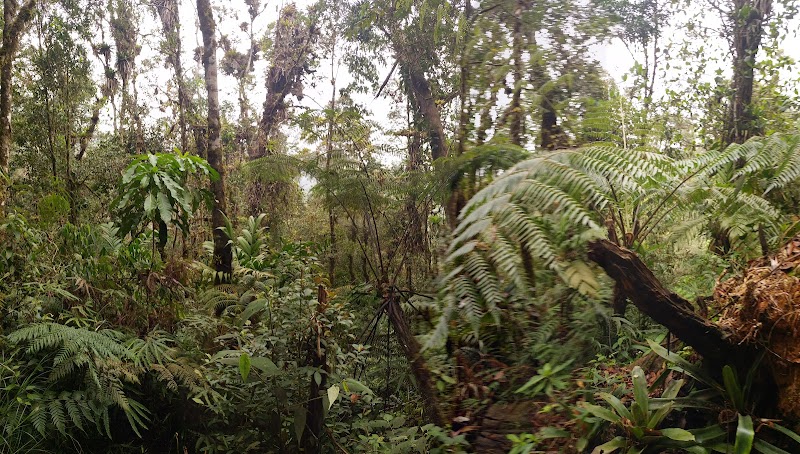Semuc Champey: Navigating the Limestone Pools and Jungle Trails of Alta Verapaz
Semuc Champey’s limestone pools and enveloping jungle invite travelers into a hands-on adventure where every step and swim reveals the raw power of nature. This guide equips you with essential tips and insights to navigate the trails confidently and savor the vivid landscapes of Alta Verapaz.
Wear sturdy water shoes
The limestone rocks around the pools are slippery and uneven, so footwear with good grip protects your feet and stabilizes your footing both on trails and in water.
Start early to beat the heat and crowds
Begin your hike in the morning when temperatures are lower and fewer visitors are around for a more peaceful, enjoyable experience.
Bring enough water and snacks
The hike involves 200 meters of elevation gain in humid conditions; staying hydrated and energized is crucial to avoid fatigue or heat-related issues.
Hire a local guide for safety and insight
Guides offer valuable knowledge about trail conditions, local ecology, and cultural context, enhancing your safety and appreciation of the area.
Semuc Champey: Navigating the Limestone Pools and Jungle Trails of Alta Verapaz
At the heart of Guatemala’s Alta Verapaz lies Semuc Champey, a natural wonder where the Cahabón River dares you to explore its cascading limestone pools surrounded by thick, humid jungle. The site’s main attraction is a series of turquoise pools perched atop a limestone bridge, inviting you to cool off after a moderate but rewarding hike through dense forest trails. The trek to the viewpoint covers roughly 2.5 kilometers (1.6 miles) with an elevation gain of around 200 meters (650 feet), winding over roots and rugged stones that test your footing without demanding expert skills.
Starting from the village of Semuc Champey, the jungle envelopes you with raw greenness; leaves shimmer with moisture, and the thick air buzzes with the chatter of tropical insects and the occasional call of howler monkeys. The trail edges along the Cahabón River, whose currents ripple with purpose beneath the limestone structure, urging you onward to the pools and the overlook.
When you reach the top, the viewpoint lays open a broad panorama—the pools spread out in brilliant blues and greens, framed by steep jungle-covered cliffs. The visual reward is immediate, clear, and unpretentious: nature in fierce form. From this vantage, the river appears a restless force, cutting a deep gorge through the hills, while below, the pools invite daring swimmers to test their limits.
Swimming in the pools is refreshing but requires attention—slick rocks and varying depths mean steady feet and alert eyes are a must. Bring sturdy water shoes and waterproof bags for valuables. Hydration is critical; the humid climate pushes your body hard, even at rest, so carry sufficient water and consider a lightweight snack for the return hike.
Timing your visit early in the morning optimizes the experience—fewer crowds and cooler temperatures help you engage with the environment in a more personal way. The pools remain accessible through the year, but the dry season (February to April) offers lower water levels for better swimming conditions and clearer waters.
In planning your trip, allow for flexibility; the jungle guards its rhythms, and weather shifts quickly. Respect the land’s fierce independence by keeping trails clean and avoiding motorized transport beyond local guides. Each step through the forest and each swim in the pools is a direct conversation with a landscape fiercely itself—untamed, vibrant, and utterly alive.
Nearby Trips
All Adventures
Boat Charters
Water Activities
Adventures near Cobán
Discover the unique and memorable adventures that make Cobán special.
Frequently Asked Questions
How long is the hike to Semuc Champey pools?
The hike is about 2.5 kilometers one-way with an elevation gain of 200 meters, typically taking around 1.5 to 2 hours uphill, depending on pace and conditions.
Are the limestone pools safe for swimming?
Yes, but caution is needed as rocks can be slippery and water depths vary. Wearing water shoes and staying aware of currents ensures a safer experience.
Do I need a guide to visit Semuc Champey?
While not mandatory, hiring a local guide is highly recommended for safety, trail knowledge, and cultural insights, especially for first-time visitors.
What’s the best time of day to visit Semuc Champey?
Early mornings offer cooler temperatures and fewer visitors, making the hike and pool experience more enjoyable.
Can I visit Semuc Champey year-round?
Yes, though conditions vary. The dry season (February-April) is best for swimming, while the rainy season can make trails slippery and increase river flow.
Is the trail suitable for children or seniors?
The trail can be challenging due to uneven terrain and elevation. Those with mobility concerns should assess carefully or consider alternative viewpoints accessible by shorter walks.
Recommended Gear
Water shoes
Essential for slippery limestone surfaces and shallow river crossings, providing grip and protection.
Lightweight backpack
To carry water, snacks, first aid, and waterproof gear comfortably during the hike.
Reusable water bottle
Hydration is crucial; carry at least 2 liters to maintain energy and prevent heat exhaustion.
Rain jacket or poncho
Helps stay dry during sudden tropical showers, which are common from May through October.
Local Insights
Hidden Gems
- "The Hidden Cave (‘Cueva Lanquín’) nearby offers a surreal spelunking experience for adventurous visitors."
- "A lesser-known viewpoint access trail leads through thinner jungle and reveals unique angles of the pools away from the main overlook."
Wildlife
- "Howler monkeys are commonly heard and occasionally seen; brightly colored toucans and motmots also inhabit the dense canopy."
- "Freshwater turtles and small fish inhabit the calm pools, adding life to the crystal waters."
History
"Semuc Champey has been significant to local Q’eqchi’ Maya communities, who regard the area as sacred and integral to their ancestral lands and traditions."

